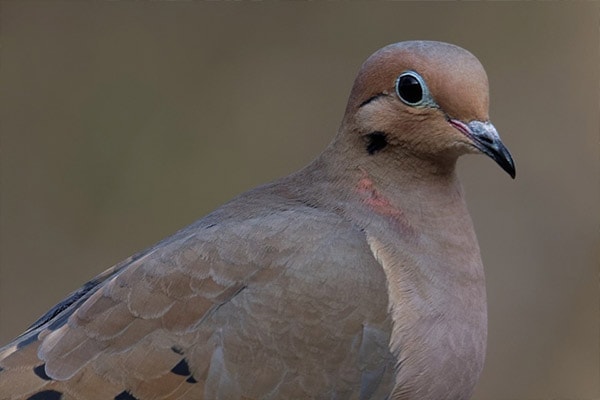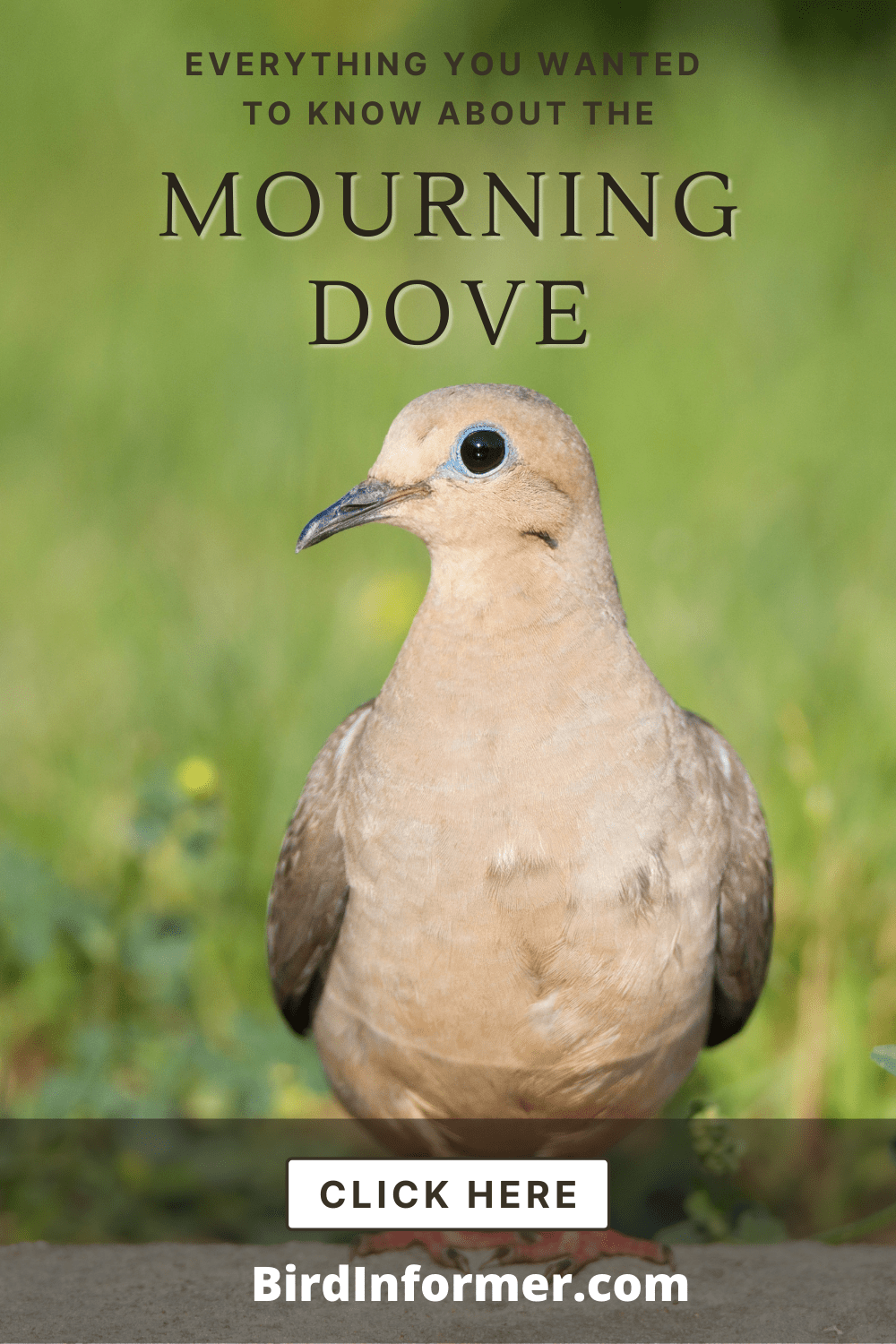Contents
- Mourning dove facts
- Mourning dove: how-to identify
- Mourning dove bird vocalization
- Where You’ll See Mourning Doves
- Mourning dove diet
- Mourning dove nesting
- Mourning dove behavior
- How-to attract mourning doves
- Mourning dove threats
- Mourning dove fun & interesting facts
- Mourning dove related species in this family
The Mourning Dove is a beautiful bird that is common across North America. They are described as graceful birds but can fly swiftly in the air. You’ll often see them in flocks during winter, perching on wires or searching for food. These birds are one of the most popular game birds, but even if their numbers decrease by millions every year, they remain abundant.
In this article, we are going to cover a wide variety of topics related to the Mourning Dove, such as:
- How to identify them
- How, when, and where they migrate
- Their diet
- How and where they nest
- And much more…
So, without any more delay…
Let’s jump right into it and learn more about the Mourning Dove.
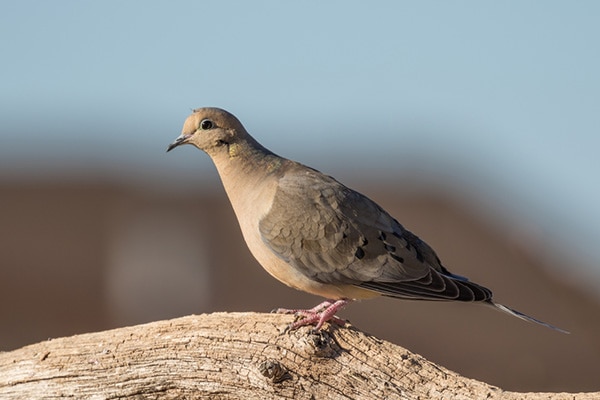
Mourning dove facts
- Common Name: Mourning Dove
- Scientific Name: Zenaida macroura
- Scientific Family: Columbidae
- Life Span: 2 years
- Size: 9.1 to 13.4 inches
- Wingspan: 17.7 inches
- Weight: 3.4 to 6.0 oz (male) 3.0 to 5.5 oz (female)
- Conservation status: Least Concern (LC)
Mourning dove: how-to identify
Mourning Doves are medium-sized birds that are around 10.5 inches in length. They have plumped bodies with a very thin neck, long tails, short legs, and a small, black bill. Their heads appear to be much smaller than the rest of their bodies.
These birds are covered with brown to tan feathers overall. Their head, neck, breast, and belly areas are of light brown color, while their back and upper wings areas are of medium brown color. On top of that, you’ll also notice how the wings are covered with black spots.
When seen under the sunlight, you’ll notice a greenish to purplish iridescence on the bird’s neck areas and a small black mark on the lower neck. The tails are dark brown with white tips on four outer tail feathers.
Differences Between Male & Female
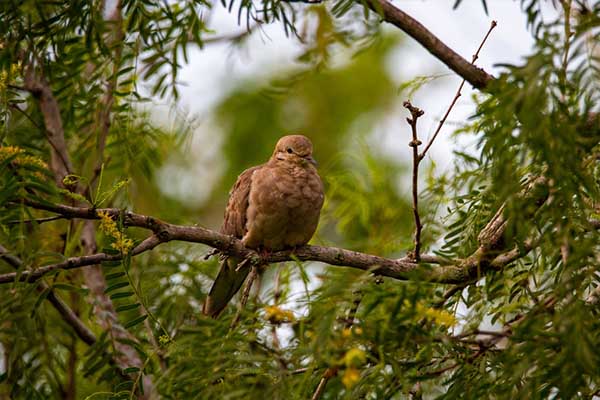
Male and female Mourning Doves look very similar to each other. But, it has been found that females appear to be smaller, and they appear browner overall than the males.
Differences In Summer Plumage vs Winter Plumage
Mourning Doves are observed to look the same all year round, regardless if it’s the summer or winter season.
Mourning dove bird vocalization
Where You’ll See Mourning Doves
Mourning Doves are widespread in North America, specifically throughout the United States, southern Canada, Mexico, and south of Panama. These birds are highly adaptable in various habitats, including open woodlands, scattered trees, and forest edges.
You’ll find a large number of Mourning Doves in agricultural and suburban areas, especially in winter. And you’ll also see them feeding on grasslands, backyards, and roadsides where they’re near humans and food sources.
Mourning dove bird migration
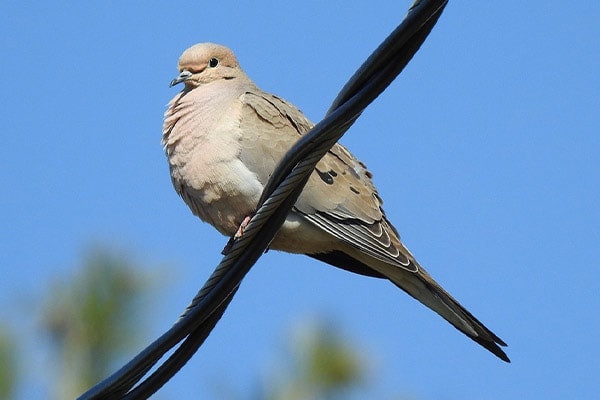
Mourning Doves are resident to long-distance migratory birds.
Populations within the United States tend to stay in their area for the whole year. The northern population of Mourning Doves (from southern Canada and the northern United States), on the other hand, would travel long miles down south to Mexico, sometimes reaching southern Panama for winter.
Mourning dove diet
Around 99% of the Mourning Doves’ diet consists mainly of seeds. This includes cultivated grains, peanuts, weeds, wild grasses, and herbs. Occasionally, they would also eat berries and insects. Added to this, it’s very rare for these birds to eat insects.
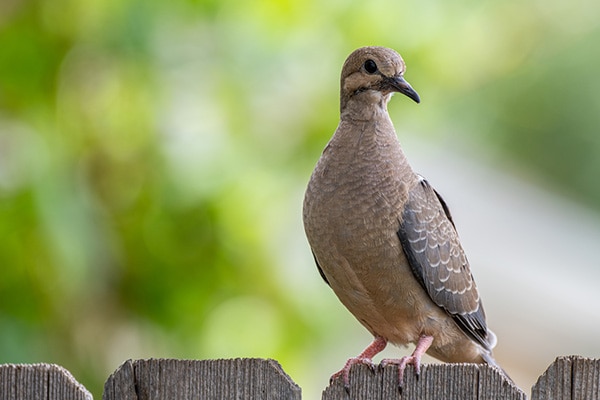
Mourning dove nesting
- Clutch Size: 2 eggs
- # of Broods: 1-6 broods
- Incubation Period: 14 days
- Nestling Period: 12-15 days
- Egg Description: Unmarked, white
Once a pair of Mourning Doves is formed, the male bird selects potential site areas while the female bird decides where to build. This is usually in an evergreen tree, a shrub, and sometimes on the ground. There are also occasions where the birds create nests on a man-made structure, as long as it’s not more than 100 feet above the ground.
Nests are built by females while the males bring the materials to her. They often use pine needles, grass stems, and twigs for the base. But unlike other nests, the nest of Mourning Doves doesn’t have any lining and may look very flimsy.
Mourning dove behavior
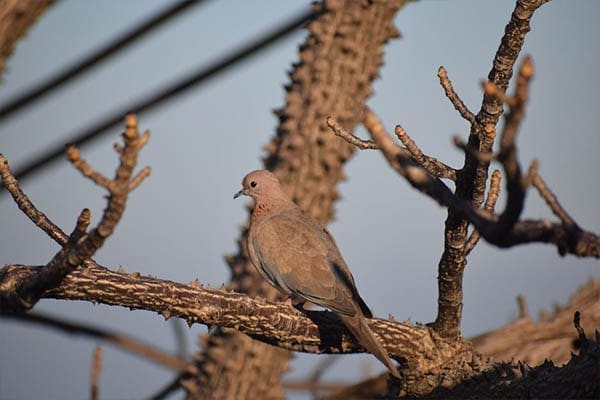
Mourning Dove may look like fragile birds as they look for food on the ground but are very swift and agile when flying. They can even fly for over 1000 miles straight to reach their wintering grounds.
During winter, these birds often form large flocks. Sometimes, they would even forage for seeds together in backyard feeders or fields. But when it’s the breeding season, the birds, especially males, become very aggressive, defending their territory.
These birds are not used with humans and may easily get spooked, sometimes leading to window collisions.
Another behavior observed from the birds is that they enjoy sunning. You’ll often see them stretching out their wings and spreading their tails under the hot sun rays.
How-to attract mourning doves
Mourning Doves are very common throughout the United States, and although they may easily be frightened by humans, they are very easy to attract.
Remember how much these birds love their seeds and how they search for food on the ground?
If you scatter some of their favorite seeds on the ground, you’ll surely have them flying to your backyard in no time. You can use millet, sunflower seeds, or even cracked corn. However, if you don’t want to scatter seeds straight to the ground, you can also use ground feeders.
These birds love open areas, so make sure to have some clearing for the birds. You can also then plant some small trees and shrubs where they can get shelter or create a nest.
Lastly, don’t forget to provide water through a birdbath. But if you want to make things seem natural, a source of running water should be perfect.
Mourning dove threats
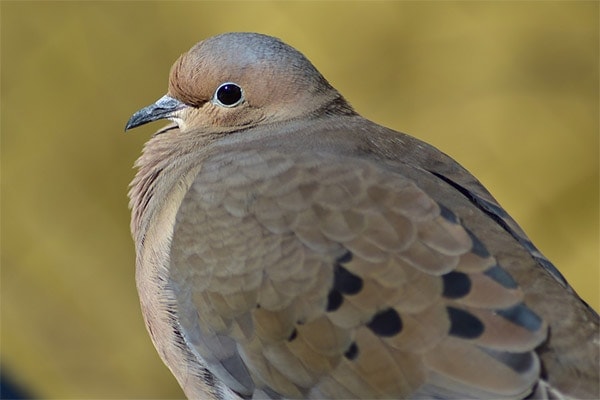
Mourning Doves are widespread across North America, and though their numbers are not threatened, it’s still declining.
It’s said that these birds are one of the most popular game birds hunted every year. Added to that, they are also at risk of lead poisoning. Predators are threats, too, and this includes falcons, hawks, raccoons, cats, dogs, and snakes.
Mourning dove fun & interesting facts
- Mourning Doves will swallow and store seeds in their crop before they fly on a perch to digest their meal; the record so far is 17,200 bluegrass seeds.
- These birds eat about 17-20% of their body weight every day.
- They are the most widespread game bird in North America; there’s an estimated 20 million Mourning Dove killed each year.
- They have a unique sleeping position where they rest their heads between their shoulders, close to their bodies.
- These birds can fly for up to 55 mph.
- The oldest recorded Mourning Dove was 30 years and four months.
- Rock Pigeon
- White-crowned Pigeon
- Band-tailed Pigeon
- Eurasian Collared-Dove
- African Collared-Dove
- Inca Dove
- Common Ground-Dove
- White-tipped Dove
- White-winged Dove

